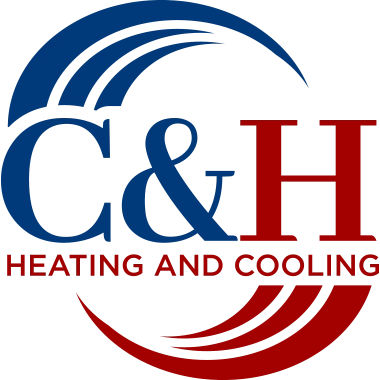When you live in a place like Anderson, Indiana, you get to experience the full range of weather conditions. From sticky summer afternoons to chilly winter nights, the local climate demands that your home stays comfortable all year long. For many homeowners, the key to that comfort is a reliable heating and cooling system. But while most people only think about their HVAC system when it breaks down, the truth is that regular maintenance is what keeps everything running smoothly.
Fall, in particular, is the perfect time to give your HVAC system the attention it deserves. With cooler weather setting in and winter around the corner, an HVAC contractor can provide a variety of essential maintenance services that not only prepare your system for the coming months but also help it last longer, run more efficiently, and keep your energy bills manageable.
In this article, we’ll explore the fall maintenance services an HVAC contractor can provide in Anderson, IN, why these services are important, and how they benefit both your home and your wallet.
Why Fall Is the Ideal Time for HVAC Maintenance
Scheduling HVAC maintenance during the fall isn’t just about convenience—it’s about being proactive. The U.S. Department of Energy reports that heating and cooling account for nearly 40% of the average household’s energy use. That means an inefficient system can dramatically increase your monthly bills. Fall maintenance ensures your system is clean, inspected, and ready to handle the heavy demands of winter heating without wasting energy.
Additionally, fall is considered a “shoulder season,” meaning HVAC contractors aren’t as swamped with emergency repair calls as they are in the middle of summer or winter. This allows homeowners to book service at a convenient time rather than waiting in line during a seasonal rush. Preventive maintenance now helps you avoid the stress and discomfort of a sudden system breakdown on a freezing January night.
Comprehensive System Inspection
Checking for Wear and Tear
One of the first things an HVAC contractor does during fall maintenance is a thorough system inspection. Every moving part, from the blower motor to the fan belts, is evaluated for signs of wear and tear. Even minor issues can escalate into costly breakdowns if ignored. For example, a frayed belt may seem small, but if it snaps in the middle of winter, your furnace could stop working altogether.
Identifying Safety Concerns
Furnaces, in particular, require careful inspection because of the risk of carbon monoxide leaks. According to the Centers for Disease Control and Prevention (CDC), carbon monoxide poisoning sends over 20,000 Americans to the emergency room each year. A professional contractor uses specialized tools to check for leaks, cracks, or other safety hazards, ensuring your system is safe to operate.
Examining Electrical Connections
Loose or corroded electrical connections are another common issue that contractors look for. Poor electrical connections not only reduce system efficiency but also create fire hazards. Tightening and cleaning these connections is a small but crucial part of the fall tune-up process.
Cleaning and Replacing Air Filters
One of the simplest yet most impactful maintenance tasks is cleaning or replacing air filters. Clogged filters restrict airflow, making your system work harder and consume more energy. In fact, the U.S. Department of Energy estimates that replacing a dirty filter with a clean one can lower your air conditioner’s energy consumption by 5% to 15%.
In fall, replacing the filter is especially important because your HVAC system is about to shift from cooling to heating. A clean filter ensures your furnace runs efficiently, keeps indoor air cleaner, and reduces the strain on your blower motor.
Furnace Cleaning and Calibration
Removing Dust and Debris
Over the summer, dust, dirt, and pet dander can build up inside your furnace. When you first turn it on in the fall, that debris can burn off, causing unpleasant odors and even reducing system efficiency. HVAC contractors clean out these contaminants to ensure your furnace operates smoothly.
Adjusting the Thermostat
Another critical step is calibrating your thermostat. If your thermostat is off by even a couple of degrees, it can result in higher energy use and uneven heating. Contractors test and adjust your thermostat to ensure it accurately reflects your home’s indoor temperature.
Lubricating Moving Parts
Your furnace has many moving components that need proper lubrication to avoid friction and unnecessary wear. During fall maintenance, contractors apply lubricants where needed to keep your system running quietly and efficiently.
Ductwork Inspection and Cleaning
Your ductwork plays a vital role in distributing warm air throughout your home. If ducts are dirty, clogged, or leaking, your system will have to work harder to maintain the desired temperature. According to the U.S. Environmental Protection Agency (EPA), leaky ducts can reduce heating efficiency by up to 20%.
During a fall maintenance visit, contractors often inspect your ductwork for visible leaks, blockages, or buildup. While full duct cleaning may not always be part of routine maintenance, identifying potential issues now allows you to schedule additional services before winter.
Testing Carbon Monoxide Detectors
Because many homes in Anderson rely on gas furnaces, testing carbon monoxide detectors is an important step in fall HVAC maintenance. Contractors ensure detectors are functioning correctly, batteries are fresh, and devices are positioned properly in your home.
Given the silent and deadly nature of carbon monoxide, having a working detector provides peace of mind. According to the Indiana State Department of Health, households should have detectors installed outside sleeping areas and on each level of the home.
Checking Airflow and Ventilation
An HVAC system is only as good as its airflow. Contractors measure and adjust airflow levels to make sure warm air reaches every room evenly. Poor airflow can result in some rooms feeling freezing cold while others are overheated, which makes for an uncomfortable winter experience.
Contractors also verify that all vents are unblocked and operating properly. If necessary, they may recommend changes to your ductwork or suggest adding zoning systems to improve comfort and efficiency.
Inspecting the Heat Exchanger
The heat exchanger is one of the most critical and expensive components of your furnace. Its job is to safely transfer heat without allowing combustion gases into your home’s air supply. Cracks in the heat exchanger can lead to dangerous carbon monoxide leaks.
During a fall inspection, contractors use advanced tools like combustion analyzers or visual scopes to examine the condition of your heat exchanger. Identifying problems early can prevent costly repairs and protect your family’s health.
Energy Efficiency Recommendations
Fall maintenance isn’t just about preventing breakdowns—it’s also about helping homeowners save money. Contractors often provide recommendations for improving energy efficiency, such as upgrading insulation, sealing air leaks, or installing a programmable thermostat.
According to Energy Star, using a programmable thermostat properly can save homeowners about $180 per year on energy bills. Your contractor can explain how to maximize these savings and tailor recommendations to your specific home.
Preparing Your Air Conditioning System for Winter
While most people focus on heating in the fall, your air conditioning system also needs attention before winter. Contractors typically clean the outdoor condenser unit, remove debris like leaves and branches, and cover the unit if necessary. This protects the system from snow, ice, and moisture, helping it last longer and reducing the risk of damage.
Benefits of Fall HVAC Maintenance
Improved Comfort
When your system is tuned up in the fall, you can expect more consistent heating throughout your home. No more hot and cold spots—just steady, comfortable warmth.
Lower Energy Bills
An efficient system uses less energy. Studies show that preventive maintenance can reduce energy use by up to 15%, which adds up to significant savings over the course of a winter.
Extended Equipment Lifespan
By keeping all components in good condition, fall maintenance reduces wear and tear and extends the lifespan of your HVAC system. A well-maintained furnace or heat pump can last 15–20 years, while a neglected one may fail much sooner.
Peace of Mind
Perhaps the most valuable benefit is peace of mind. Knowing your system has been inspected, cleaned, and optimized means you can face the coldest Indiana nights without worry.
How Often Should You Schedule Maintenance?
Industry experts, including the Air Conditioning Contractors of America (ACCA), recommend scheduling HVAC maintenance twice a year—once in the spring for cooling systems and once in the fall for heating systems. This ensures your equipment is always ready for the season ahead.
Skipping maintenance may seem like a way to save money in the short term, but the long-term costs of emergency repairs, higher energy bills, and premature system replacement far outweigh the cost of preventive service.
For HVAC Services in Anderson, IN, Contact C&H Heating and Cooling Today
Taking care of your HVAC system before winter sets in is one of the smartest things you can do as a homeowner. From thorough inspections and safety checks to cleaning, calibrating, and improving efficiency, fall maintenance services prepare your system for the months ahead.
At C&H Heating and Cooling, we understand the importance of keeping your home safe, warm, and comfortable all winter long. Our experienced technicians provide comprehensive fall maintenance services designed to protect your investment, reduce energy use, and give you peace of mind.
Don’t wait until the first cold snap to find out your furnace isn’t working properly. Contact C&H Heating and Cooling today to schedule your fall maintenance service and ensure your home is ready for whatever the Anderson winter brings.





